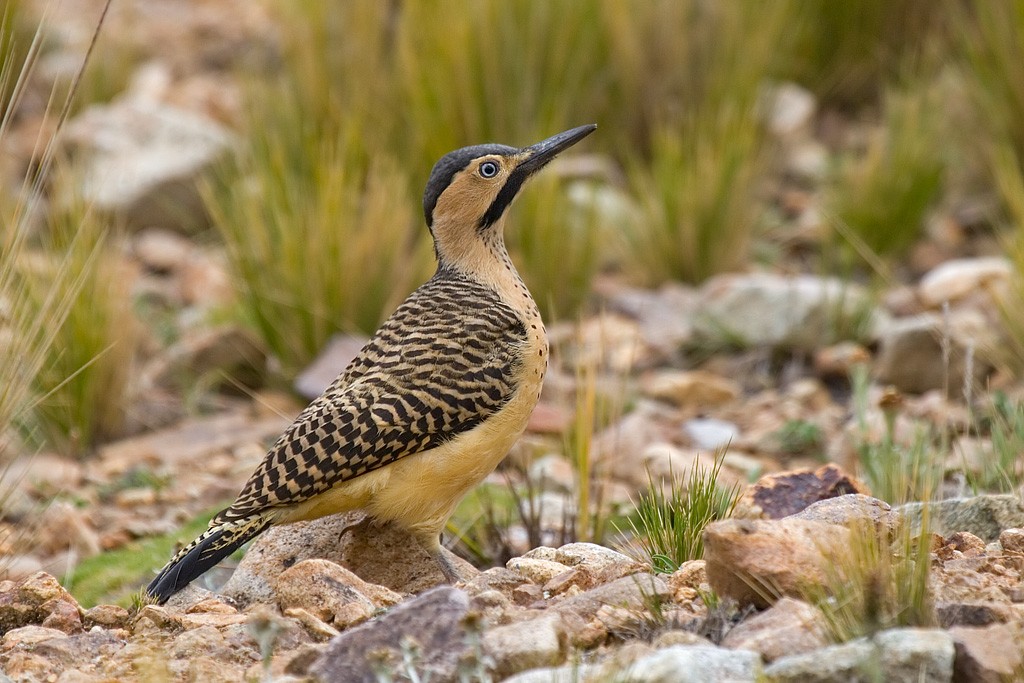Andean Flicker
A species of Flickers Scientific name : Colaptes rupicola Genus : Flickers
Andean Flicker, A species of Flickers
Botanical name: Colaptes rupicola
Genus: Flickers
Content
Description General Info
 Photo By Adam Kumiszcza , used under CC-BY-SA-3.0 /Cropped and compressed from original
Photo By Adam Kumiszcza , used under CC-BY-SA-3.0 /Cropped and compressed from original Description
A large woodpecker, it grows to a length of about 32 cm (13 in). It has a long tail, rounded wings (noticeable in flight) and a long powerful beak. The head and throat are largely white or buff, marked by a black crown and nape and a dark malar stripe, tinged reddish in the male in some subspecies. Body upper parts are boldly barred in black or dark brown and buff. The upper wings are brown and slightly barred and the under wings are yellowish. The tail coverts are white with slight brown barring, the upper tail is blackish with fine barring at the sides and the under tail has buff edges. Underparts are cream or buff with some darker speckling, the breast sometimes being tinged with orange. The beak is black, the iris yellowish and the legs grey, pink or buff. 
Size
32 cm
Colors
Brown
Black
Yellow
Bronze
Gray
White
Cream
Nest Placement
Cliff
Feeding Habits
Andean Flicker predominantly consumes insects, foraging by sweeping debris and probing soil and grass with its beak. It showcases unique adaptations for ground feeding.
Habitat
Andean Flicker predominantly inhabits high-altitude areas of the Andes, typically between 2,000 and 5,000 meters above sea level. The species favors rugged and rocky mountainous terrain, including boulder-strewn páramo, Andean puna with patches of woodlands and scrub, as well as montane scrub and Polylepis forests. Andean Flicker is found in environments with grassy knolls adjacent to rock formations, cliffs, and riverbanks, which serve as lookout points. Although generally observed above 3,000 meters, foraging parties have been sighted at altitudes as low as 800 meters.
Dite type
Insectivorous
General Info
Feeding Habits
Bird food type
Distribution Area
The species is native to Peru, Chile, eastern Bolivia and northeastern Argentina. Its altitudinal range is between about 2,000 and 5,000 m (6,600 and 16,400 ft). More common habitat types occupied are high mountain terrain with rocky outcrops, stones, scrub, grassland and alpine tundra, including páramo and puna grassland. It is sometimes found in the upper parts of the tree zone, plantations and woodland patches. 
Species Status
Not globally threatened.